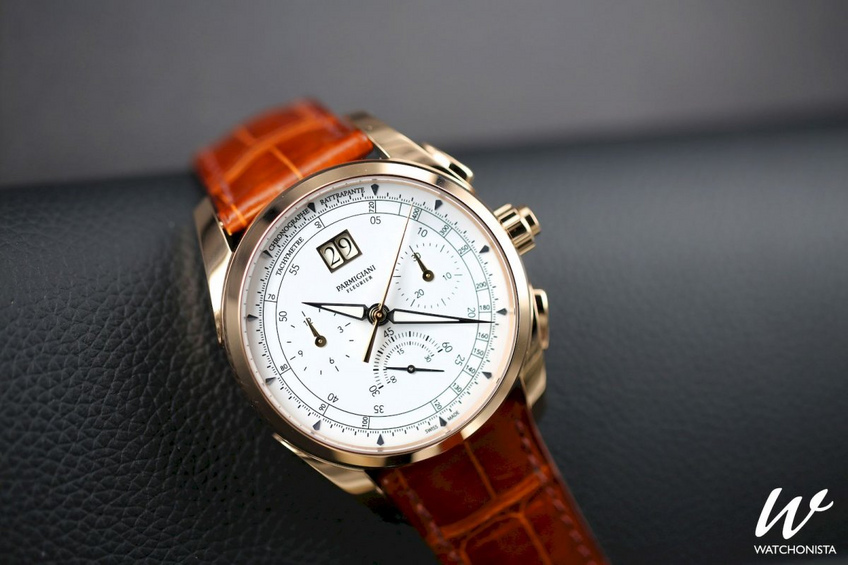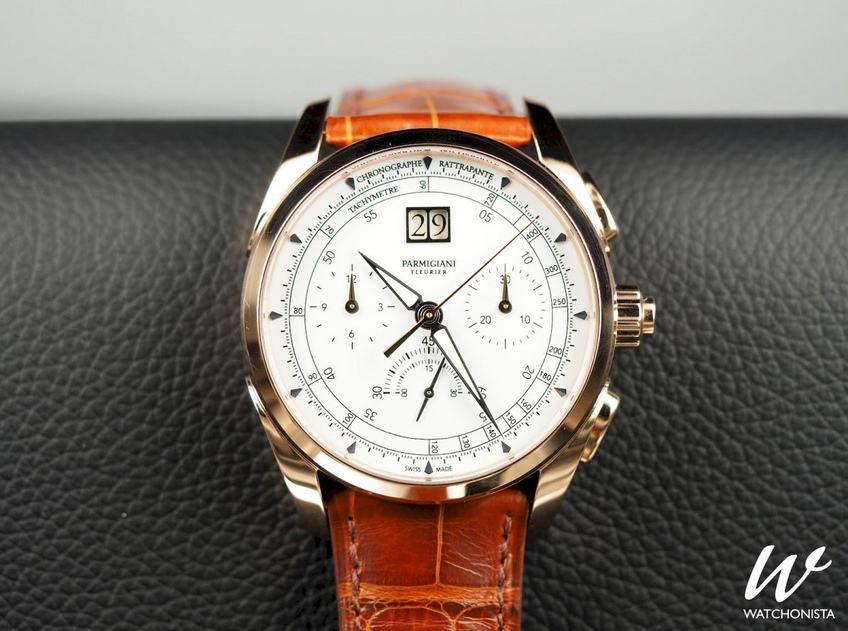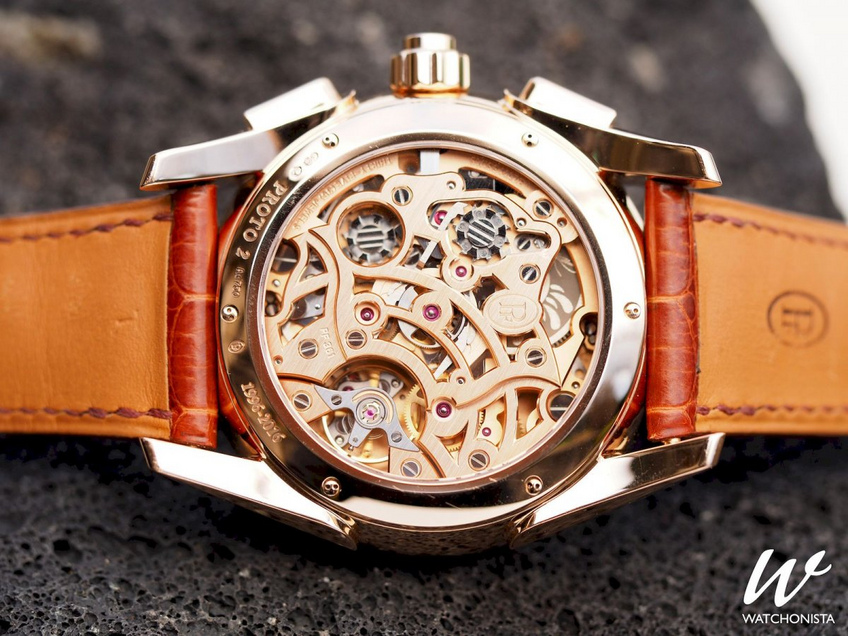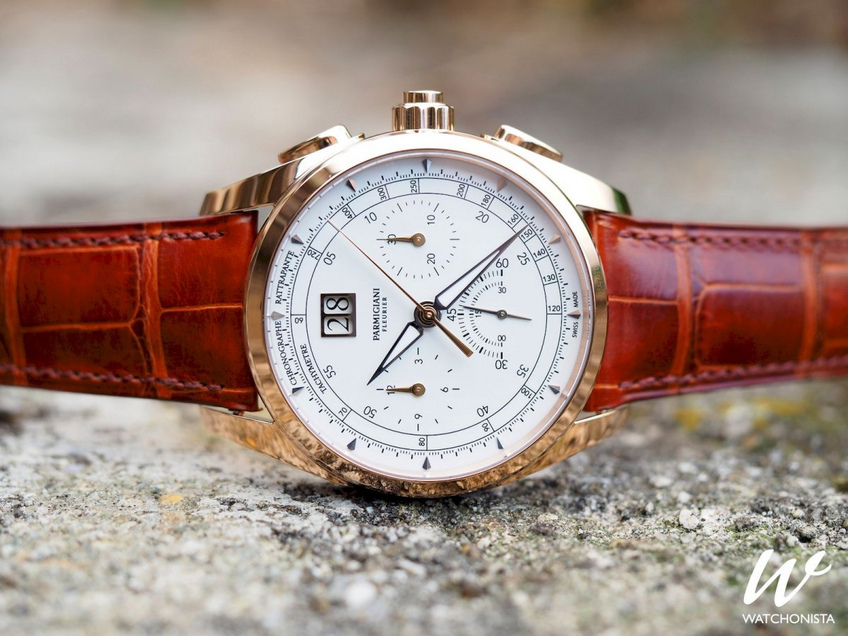

Parmigiani Fleurier Tonda Chronor Anniversaire: combining two decades of experience
The current depth of knowledge available on watchmaking makes us forget that movements are one of the most complex mechanisms to develop and produce, especially those with integrated chronographs. Here’s a little reminder for enthusiasts based on the one by Parmigiani Fleurier.
To avoid boring budding enthusiasts, it seems to have become a habit to introduce watches without going too deep into the specifics of their mechanics or stopping to analyse the construction of their calibers. Therefore, we tend to forget that it was those very exceptional calibers –which watchmakers put a lot of effort into developing –that revived watchmaking in the 1990s. Consequently, Parmigiani Fleurier was created 20 years ago in an endeavour to satisfy the public's fascination for artisanal crafts and hand-made products.
Back to basics
Michel Parmigiani, a passionate watch repairer, has always been a big fan of beautiful mechanics. As a watch surgeon, he has often breathed new life into rare or unique calibers by dissecting them to understand how they were designed. From there he would repair them, always respecting their integrity. This love for “beautiful workings”has been at the inception of some of the manufacture’s movements –both hand-wound and automatic –which watch experts consider as references.

However as Parmigiani put it: "Ever since we embarked on our watchmaking adventure, I have wanted to create an integrated chronograph. Well, here we are 20 years later with my dream fulfilled, which is no coincidence as it reflects our manufacture's evolution. To obtain the integrated chronograph, we first had to master the imposing and meticulous assembly of its components. That did not only concern their production but also their use and function at the heart of a caliber. In short, we needed to know both their potential and their limits inside out. This is why an integrated chronograph can only be produced by an experienced manufacture. The Tonda Chronor Anniversaire reflects 20 years of hard work".
The ground rules
Watchmakers are aware that the design of a simple watch caliber is a complicated task in itself. But they also know that the development of an integrated chronograph is an exercise of style. There are so many chronographs available on the market that we have forgotten how difficult it is to integrate a caliber with this complication without using a function module. According to Parmigiani and other watchmakers, the development of a chronograph without a module is more complex than the development of a simple movement driven by a tourbillon. As he explained: "It is important to know that chronographs are equipped with kinematic chains where every action both determines and triggers the following one. Moreover, every sequence must be synchronized and adjusted to a T".

Michel Parmigiani also added that an integrated chronograph is a reflection of a manufacture's potential. Yet, he also highlighted the investment of the craftsmen and engineers who lived the same adventure and joined their efforts to obtain coherent results.
Straight to the heart of the matter
Since it was the brand's first integrated hand-wound chronograph caliber (ref. PF361), it was treated with utmost care. Indeed, it had to prove that the manufacture has reached its zenith in 20 years. The most noble materials were used for this timepiece to showcase the skills of a renowned brand. Hence, solid gold was chosen to cut the plate and bridges, which were later skeletonized. However, the ductile material is hard to work with industrial tools because it sticks to them. Thus, it took 50 hours per unit to obtain the hand-chamfered (there were many internal angles), satiny and sanded concentric decorations. And the operation was repeated 50 times to assemble all the necessary calibers that were to be housed in the two series which the brand has introduced this year: the pink gold and white gold versions.

Three-complication mechanics
The noble materials chosen are not really the distinctive features of the piece. Its true value lies in all the functionalities combined in a coherent assembly. Once it was determined that the base was to be in gold, the engineers and watchmakers assembled the caliber in a way to attain visual harmony and obtain the balance Parmigiani gives so much importance to. Thus, the two column wheels housed in the caliber were interlinked to each other's axis and positioned perpendicular to the axis of the winding stem. Incidentally, the first column wheel serves as a traditional chronograph whereas the other one is a split-seconds (the complication inherent to chronographs and activated by the pusher in the winding crown).
To offer tenth of a second precision, the chronograph features a traditional regulation system with a Swiss lever oscillating at a 5-Hertz frequency – i.e. 36,000 vibrations per hour. To ensure the movement was stable, the manufacture used the cross-through double-balance cock that is so much in vogue nowadays. It also features a variable inertia balance that provides high reliability and which also saved the brand from having to use the disgraceful index-assembly. Nevertheless, the hand-wound integrated caliber with a barrel hive signed Michel Parmigiani also features a vertical coupling. Watchmakers nowadays prefer the latter to a horizontal coupling as it does not jump when started and guarantees higher display of accuracy.

Speaking of the display, the manufacture –celebrating its 20th anniversary this year –added a large date at 12 o'clock to these useful complications. Of course, it is directly integrated on the internal face of the plate, thus maintaining technical reliability. However, it also meant that the positioning of the 13-mm disks had to be determined as soon as the caliber was finished. One distinctive feature of said caliber is that its permanent second was not placed in a counter at 9 o'clock but rather in two half-circles equipped with a two-stem hand of different length at 6 o'clock.
The integrated chronograph was made respecting the traditions and is a marvellously balanced piece with an original mechanical structure. Its design is faithful to canonical creations, even if it sports several contemporary technical features that help to provide perfect reliability to demanding watch lovers. Not quite cut for mass production, it reflects Parmigiani Fleurier's quest for continuous evolution. In this case, it was the creation of an integrated chronograph that could, thanks to thorough kinematics, evolve in the future to enrich collections. All leading brands, even the oldest and most established have dreamed of achieving this. To be continued…
























